Digitizing History
Part 1
CULPEPER, VA.
Situated high on, and partially buried within, a hill here in the rolling Virginia Piedmont plateau countryside is a most unusual building. Inside it is an even more unusual collection of audiovisual technology and artifacts—possibly the most spectacular and impressive anywhere in the world.
The specially fabricated scanner used to retrieve motion picture images from 35mm paper strips. Officially known as the Packard Campus of the Library of Congress (LOC) National Audio-Visual Conservation Center, the structure contains a vast number of recordings preserved on a variety of media, and in an almost limitless number of formats including, film, tape, disc, wire and cylinder.
The physical size of the complex itself is staggering—it measures in at 415,000 square feet (that’s equivalent to more than seven football fields)—and contains literally millions of items. There are actually four building components: a collections storage building, conservation building, the “nitrate vaults” and a central plant.
Although it’s still a work in progress—10 years have passed since its inception—some areas are operational and additional ones are coming on line at regular intervals. It’s currently staffed with 60 government workers; a number that will more than double when all systems are installed and running. Ascent Media has been responsible for the overall design of audio/visual aspects, with Communications Engineering Inc. (CEI) performing equipment installations.
MILLIONS OF ITEMS
When asked about the number of hours of content the repository held, Greg Lukow, chief of the Motion Picture, Broadcasting & Recorded Sound Division, said that Library of Congress doesn’t figure things in that way.
A small portion of the untold millions of feet of motion picture film at the LOC Culpeper facility. “We have a total of 6.2 million collection items,” Lukow said. “That’s 1.2 million moving image items, three million sound recordings and two million supporting documents.”
No matter how you measure it, that’s a lot of content. And it continues to grow by some 120,000 to 150,000 items each year, with the overwhelming majority entering through the auspices of the U.S. Copyright Office.
Collection items span more than a century, going back to the beginnings of man’s attempts to capture moving images and sounds for others to witness. Virtually every known recording format is represented, and as stored information is useless unless there’s methodology for recovering it, the Center contains a daunting collection of audio/visual equipment as well.
Preserved video is there on everything from the original Ampex 2-inch quadraplex format on down through the latest digital media. Audio exists on everything from Edison cylinders to DAT, and even though the bulk of the motion picture footage is on 35mm and 16mm film, there are several variations on this theme too.
PAPER FILM STOCK
One of the more interesting moving image recovery devices has to cope with rolls of paper.
This “cherry” Ampex VR-2000 2-inch videotape recorder was relocated from the LOC’s Capitol Hill facility. To secure a U.S. copyright early in the history of motion pictures, film producers had to provide a copy “printed on paper” of their intellectual property to the government. Just sending in a distribution copy of the motion picture footage was not allowed. This resulted in the accumulation of thousands of such paper prints before regulations were changed in the 1910s to accept conventional reels of film.
A special machine had to be constructed for LOC recovery of motion pictures preserved in this particular manner. And it’s fortunate that such prints are available, as some classic moments in early cinema would have been otherwise lost forever due to the propensity of the nitrate-based film stock on which they were printed to turn into a hazardous goo.
PLANNING FOR NITRATE
This points to another special feature of the Conservation Center—a special area for safe storage of remaining movies shot on nitrate footage. By official count, there are some 140,000 reels of this stock to deal with, and due to the chemical instability and explosive potential of nitrate film, special provisions had to be incorporated to both store it safely and to slow its eventual deterioration.
The nitrate stock storage quarters deserve special attention, as they are obviously built to contain something with great potential for harm—the special cells appear many orders of magnitude more secure than Hannibal Lecter’s place of incarceration in “The Silence of the Lambs.”
James Snyder, a project engineer with CEI, described the special nitrate repository.
Film is still a large part of the National Audiovisual Conservation Center as evidenced by this Steenbeck flatbed editor, one of several in the facility. “There are 124 vaults expressly designed to store nitrate film,” Snyder said. “When all of the footage is moved on site, there will be some 140 million feet [of film] here. Each reel has explosive potential.”
Each vault is equipped with a very thick door and seals, and the construction is such that it can withstand a temperature of 2,000 degrees F. for three hours. There’s a special air supply and fire suppression system for the vaults, and if all else fails, each is equipped with its own “chimney” to the outside world. If a fire and explosion should occur, it’s better to vent the heat, gases and shock wave outside the building than allow it to possibly breech adjoining cells and start a chain reaction.
During my tour of the facility, I was informed that I would probably be one of the last “outsiders” allowed in the nitrate storage area. After the arrival of the film, the temperature would be held at 39 degrees F. and only specially trained personnel may access the corridor and vaults.
Concentration and immobilization of remaining nitrate footage is not the only goal of the facility. Another part of the project is to copy it onto modern safety-base film and also to preserve images digitally.
GIANT PHOTO LAB
To accommodate the first part of this long-term process, a special film processing laboratory for preserving images is being constructed at the Culpeper facility. This is probably the last such large-scale facility to be built anywhere, due to the emergence of digital cinema.
James Snyder, CEI project manager, explains how this SAMMA robotic device will be used to automatically clean, evaluate and play out cassette video recordings at the LOC facility. It is one of several being installed. “There will be four black and white processors and two color units,” said Snyder. “Space is being provided for two additional processors if they’re required.”
Along with the processing machines, there’s a chemical mixing operation with vats that could accommodate a small car, a silver recovery operation, nine film printing rooms and also a water purification plant that could probably serve a small town.
“Three wells were drilled to serve the facility,” Snyder said.
The film operation is a consolidation of several other LOC facilities, reaching from Maryland to Ohio, according to Snyder.
The ultimate goal is to scan all footage—including film and paper images—and save it to a digital storage format.
Bob Bieberdorf, CEI senior design engineer, explained that special care and attention will be used in doing the digital transfers.
“They will be doing frame-by-frame color correction with the da Vinci 2K system,” Bieberdorf said. “Plans are for two scanners—a 2K and a 4K.”
After scanning and color correction, content will be converted to DPX or JPEG2000 files, QC’d and then stored on archival digital media. Plans call for making this content easily accessible to researchers via a playback-on-demand system linked to viewing stations at the Library’s Capitol Hill reading rooms. A dedicated fiber path is being provided to bridge the distance between Culpeper and Washington.
Racks of 1-inch VTRs are being brought to life to begin the transfer of thousands of hours of content to digital. And while digital video may be the gold standard of the 21st century, the LOC facility’s collection has to accommodate analog video recordings that stem from the introduction of this technology in 1956.
PLAYING THE TAPES
Although neither Ampex’s nor RCA’s first-generation recorders are in the arsenal of machines that can be used to play back an hour of 1960s primetime programming, older broadcast engineers would be very much at home with the machines that are either in operation or being readied for service. These include Ampex VR-2000s, AVR-2s and others. One of the ‘2000s’ was relocated from service at the LOC’s Madison Building location in downtown Washington and is in pristine condition.
Snyder explained that other machines being stored there had come from various sources and needed some TLC before they could go on line.
One-inch type “C” and even type “B” entities are represented, as is the EIAJ 1/2-inch open reel format. D6 is there, as well as most other modern formats.
“We are setting things up for all tape formats—reel and cassette,” said Snyder, “But the largest number of video recordings here are on 3/4-inch cassettes.”

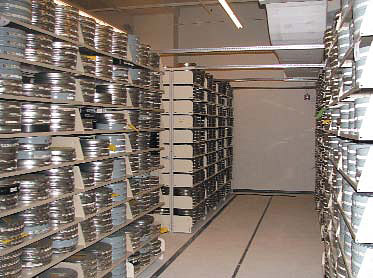
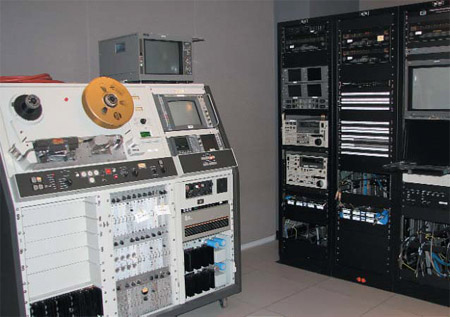
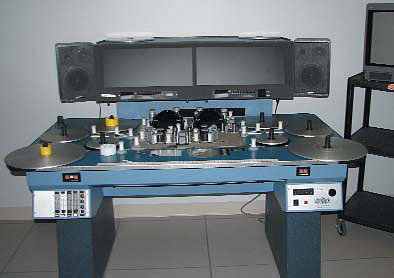
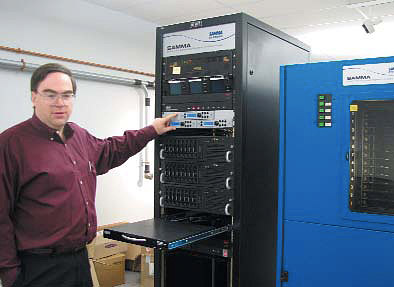
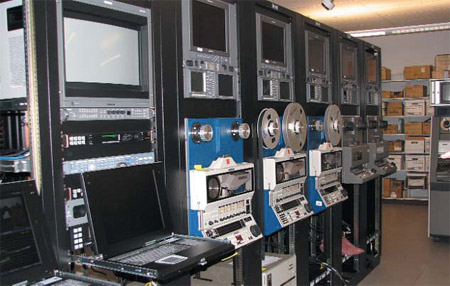
The professional video industry's #1 source for news, trends and product and tech information. Sign up below.
James E. O’Neal has more than 50 years of experience in the broadcast arena, serving for nearly 37 years as a television broadcast engineer and, following his retirement from that field in 2005, moving into journalism as technology editor for TV Technology for almost the next decade. He continues to provide content for this publication, as well as sister publication Radio World, and others. He authored the chapter on HF shortwave radio for the 11th Edition of the NAB Engineering Handbook, and serves as contributing editor of the IEEE’s Broadcast Technology publication, and as associate editor of the SMPTE Motion Imaging Journal. He is a SMPTE Life Fellow, and a member of the SBE and Life Senior Member of the IEEE.

